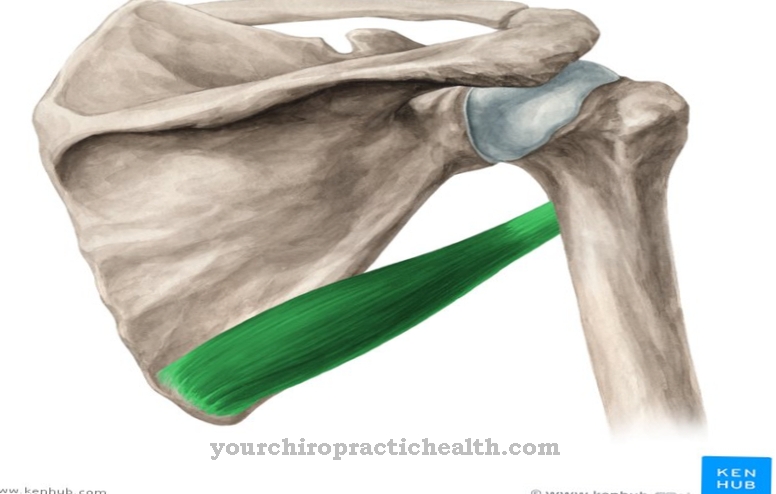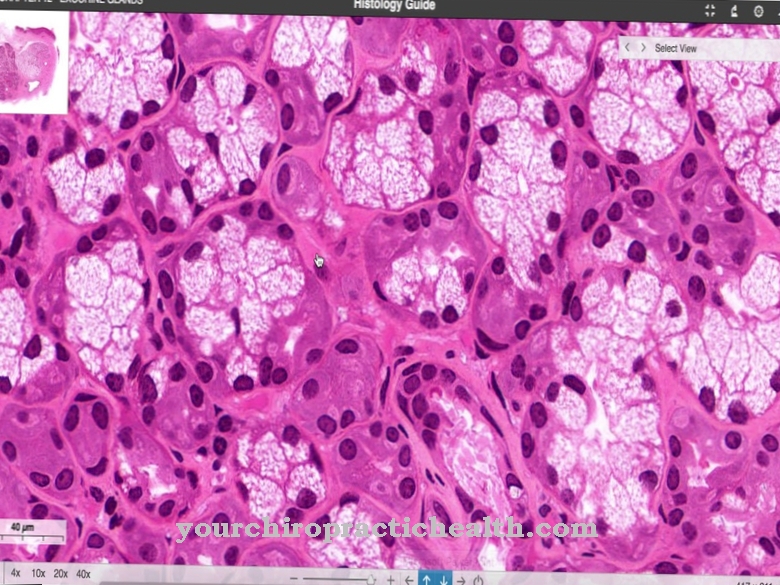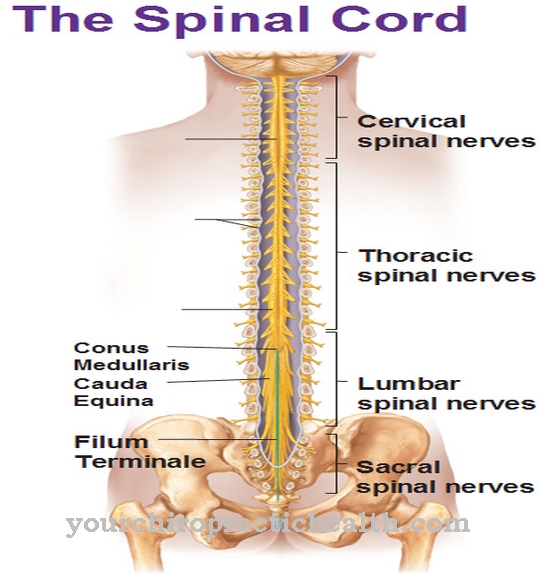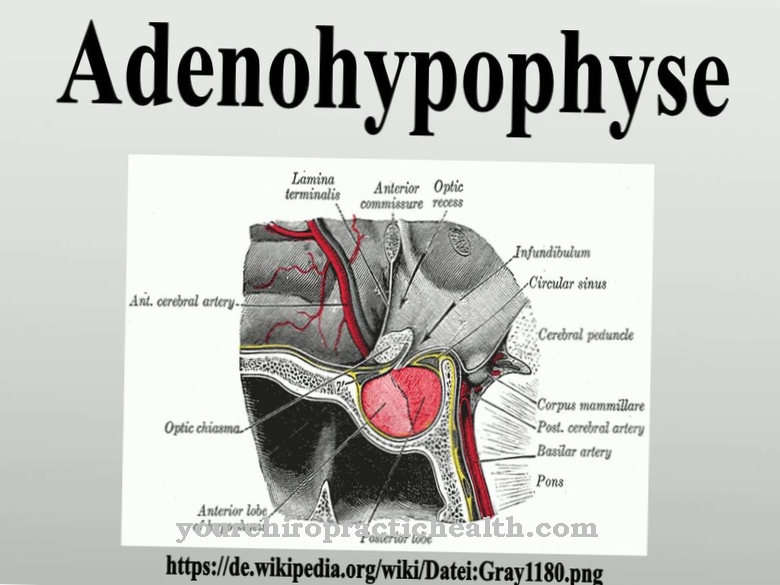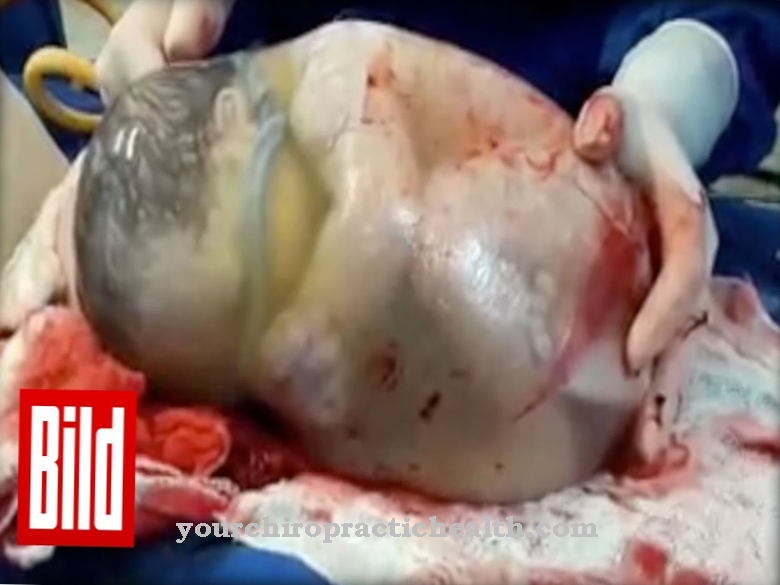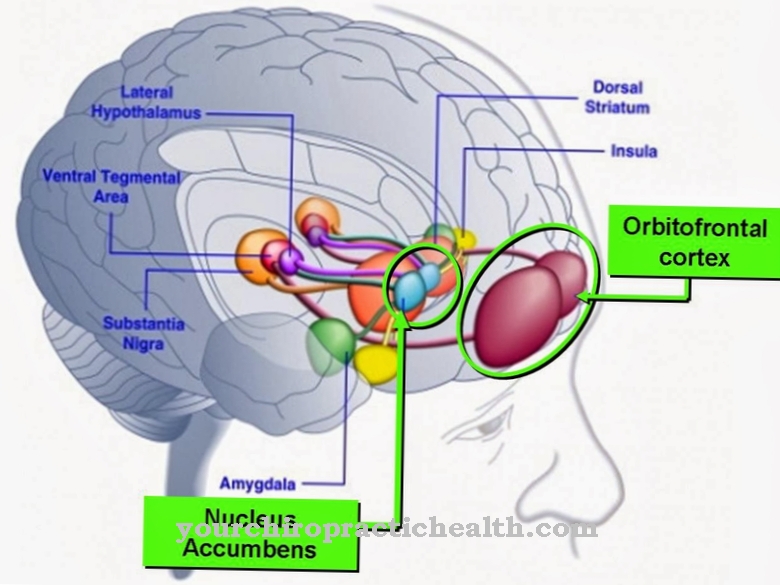Long bones bear their name because of their elongated shape. The bones have a uniform marrow cavity in which the bone marrow is located. They only occur in the extremities.
What is a long bone?
The tubular bones can be divided into "long tubular bones" and "short tubular bones". The long tubular bones include the upper arm bone (humerus) as well as the ulna (ulna) and spoke (radius), but also bones of the leg extremities such as the thighbones (femur), shinbones (tibia) and fibula.
In contrast, there are the "short tubular bones". This includes metacarpal and metatarsal bones (metacarpals or metatarsals) and finger and toe bones (Ossa digitorum manus or pedis). In addition to tubular bones, osteology also distinguishes between flat bones (skull, ribs), short bones (carpal bones), sesame bones (kneecap), air-filled bones (frontal bones) and irregular bones such as the spine.
Bones are living organs with a good blood supply, made of different tissues. They are part of the musculoskeletal system and at the same time protect the internal organs.
The mechanical properties and the strength of bones against pressure, tension, bending and torsion are based on the incorporation of inorganic components in the organic intercellular substance. The tissue of the bones is constantly regenerating. Depending on the arrangement of the collagen fibrils, a distinction is also made between lamellar bones and braided bones. The braided bones are only found during the lead phase of bone development and at the beginning of fracture healing.
Anatomy & structure
The bone tissue consists largely of inorganic components, and here again of hydroxyapatite. Only 25% make up the organic part, primarily collagen, and 10% is water. The bone tissue also forms the storage organ for calcium and phosphate.
The long bones consist of two ends of bones called epiphyses and a shaft of bones called the diaphysis. The short transition section between the epiphysis and the diaphysis is called the metaphysis. The entire long bone is then surrounded by the periosteum, the so-called periosteum. Morphologically, one can differentiate between two bone architectures in long bones. The inner, spongy structure with the trabeculae is called subtantia spongiosa, or "spongiosa" for short.
There is also the outer substantia compacta, or "compacta". It is made up of compact bone. The cancellous bone reduces weight and protects the bone marrow. The copacta forms the actual supporting function of the bone. It consists of lamellar bone organized in the form of osteons. The cartilaginous joint surfaces that protect the bone from wear and tear are located on the epiphyses.
Function & tasks
The long bones mainly serve as support for the body. Although bones are also the site of hematopoiesis, the flat bones are mainly responsible for this. The red bone marrow they contain is involved in the formation of red blood cells, white blood cells and platelets.
The bone formation is in a dynamic equilibrium with the dissolution of the bone. Osteoblasts are responsible for building the basic bone substance. They excrete calcium phosphates and calcium carbonates. These salts crystallize along the collagen fibers and wall the osteoblasts, creating osteocytes. This tissue hardens and forms bone structure. The antagonist to the osteoblasts are the osteoclasts. They can dissolve bones again. For example, if the bone is not loaded, e.g. if the bone is in a plaster cast for a long time, there is significant bone breakdown and thus calcium loss of the skeleton.
The longitudinal growth of the bones starts from the epiphyseal plate, or growth plate. It consists of hyaline cartilage and is located between the epiphyses and the bone shaft. As a result, the diaphysis and epiphysis become longer and stronger with age. After growth is complete, around the age of 20, the growth plate ossifies.
Blood flow is guaranteed by an artery that enters the bone through the diaphysis. The opening where the blood vessel enters the bone is called the foramen nutricium. The artery that supplies blood is the nutricial artery. The epiphyses usually have their own artery that supplies them with blood - the arteriae epiphyseales. They are therefore independent of the diaphysis nutric artery.
Diseases
The most common complaints that can occur in connection with the long bones are fractures. Almost everyone suffers a bone fracture at some point in their life. It is the result of excessive mechanical stress on the bone.
It often occurs in sports, such as skiing or mountain biking. The bone can no longer withstand a sudden, violent impact. Fractures can be single or multiple, as well as open or closed. A multiple fracture is when the bone is severed more than once. In the case of an open fracture, the soft tissues overlying the bone are also severed so that the bone is often visible to the naked eye.
Those affected suffer severe pain and the injured section can no longer be moved arbitrarily. In addition, there are often enormous deformities or abnormal ranges of motion of the bone. Osteoporosis is a disease that is associated with an increased tendency to fracture. It usually occurs with age, and there is a decrease in bone quality and a decrease in bone mass. The bone mass naturally begins to decrease somewhat from the age of 35 to 40. Therefore, people with inherited, low bone mass have an increased risk of developing osteoporosis. As a result, women are more often affected than men.
Prevention and therapy for osteoporosis are very similar. Those affected are supplied with more calcium and vitamin D through dietary changes or medication.
Typical & common bone diseases
- osteoporosis
- Bone pain
- Broken bone
- Paget's disease

